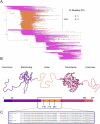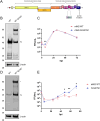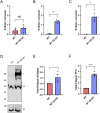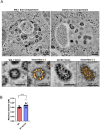This is a preprint.
Variant mutation in SARS-CoV-2 nucleocapsid enhances viral infection via altered genomic encapsidation
- PMID: 38559000
- PMCID: PMC10979914
- DOI: 10.1101/2024.03.08.584120
Variant mutation in SARS-CoV-2 nucleocapsid enhances viral infection via altered genomic encapsidation
Update in
-
Variant mutation G215C in SARS-CoV-2 nucleocapsid enhances viral infection via altered genomic encapsidation.PLoS Biol. 2025 Apr 29;23(4):e3003115. doi: 10.1371/journal.pbio.3003115. eCollection 2025 Apr. PLoS Biol. 2025. PMID: 40299982 Free PMC article.
Abstract
The evolution of SARS-CoV-2 variants and their respective phenotypes represents an important set of tools to understand basic coronavirus biology as well as the public health implications of individual mutations in variants of concern. While mutations outside of Spike are not well studied, the entire viral genome is undergoing evolutionary selection, particularly the central disordered linker region of the nucleocapsid (N) protein. Here, we identify a mutation (G215C), characteristic of the Delta variant, that introduces a novel cysteine into this linker domain, which results in the formation of a disulfide bond and a stable N-N dimer. Using reverse genetics, we determined that this cysteine residue is necessary and sufficient for stable dimer formation in a WA1 SARS-CoV-2 background, where it results in significantly increased viral growth both in vitro and in vivo. Finally, we demonstrate that the N:G215C virus packages more nucleocapsid per virion and that individual virions are larger, with elongated morphologies.
Conflict of interest statement
Competing interests HCK, HWD, BAJ, VDM and EAB have filed a patent on the use of mutations in the nucleocapsid linker as a means of increasing nucleocapsid protein levels. V.DM. has filed a patent on the reverse genetics system and reporter SARS-CoV-2. Other authors declare no competing interests.
Figures








References
Publication types
Grants and funding
LinkOut - more resources
Full Text Sources
Miscellaneous
